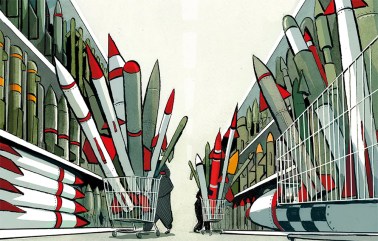Mohsin Hamid’s fifth novel opens with a Kafkaesque twist: Anders, a white man, wakes to find that he has turned ‘a deep and undeniable brown’. Unrecognisable to his entourage, he first confesses his predicament to Oona, an old friend and new lover. Similar metamorphoses begin to be reported throughout the country and violence ensues as pale-skinned militants stalk the streets.
In its use of a speculative device, The Last White Man recalls Hamid’s 2017 Booker-shortlisted Exit West, in which migrants teleport through Narnia-like doors. Whereas his first three books played with narrative conventions – a trial framing Moth Smoke (2000), dramatic monologue in The Reluctant Fundamentalist (2007) and the self-help conceit of How to Get Filthy Rich in Rising Asia (2013) – these last two books play with reality to query societal conventions.
Hamid has said that The Last White Man was born out of his experience in the aftermath of 9/11, when he lost ‘many of the benefits of whiteness’ previously afforded by virtue of his education and prestigious job (as a management consultant at McKinsey).

Get Britain's best politics newsletters
Register to get The Spectator's insight and opinion straight to your inbox. You can then read two free articles each week.
Already a subscriber? Log in








Comments
Join the debate for just $5 for 3 months
Be part of the conversation with other Spectator readers by getting your first three months for $5.
UNLOCK ACCESS Just $5 for 3 monthsAlready a subscriber? Log in